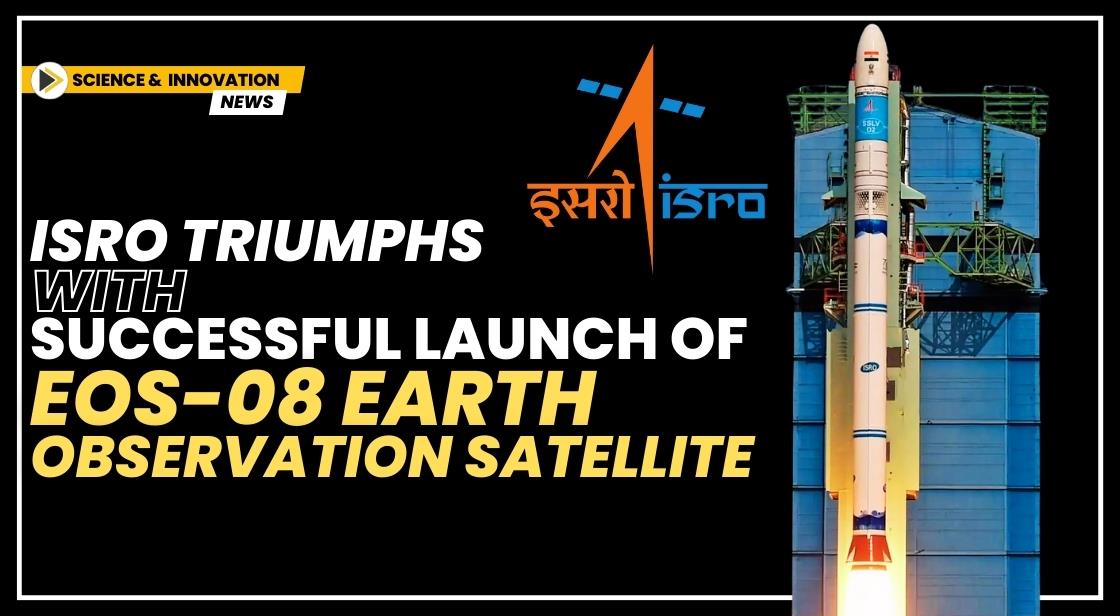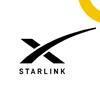ISRO Triumphs with Successful Launch of EOS-08 Earth Observation Satellite

News Synopsis
On August 16, 2024, the Indian Space Research Organisation (ISRO) successfully launched the EOS-08 Earth Observation Satellite aboard the Small Satellite Launch Vehicle (SSLV)-D3. This significant milestone marks the third and final developmental flight of the SSLV, which lifted off from the first launch pad at the Satish Dhawan Space Centre in Sriharikota at 9:17 AM. Seventeen minutes later, the satellite was successfully injected into a 475 km circular orbit, precisely as intended.
SSLV-D3: The Final Developmental Flight
The SSLV-D3's third and final developmental flight is a key achievement for ISRO. The SSLV is designed to be a versatile and cost-effective launch vehicle capable of deploying Mini, Micro, or Nano satellites into a 500 km planar orbit. This three-stage vehicle uses all solid propulsion stages, complemented by a liquid propulsion-based Velocity Trimming Module (VTM) as the terminal stage. The SSLV's design is driven by the need for low-cost launches, quick turnaround times, and flexibility in accommodating multiple satellites, all while requiring minimal launch infrastructure.
The SSLV-D3 launch marks the completion of the vehicle's development process, paving the way for its transition to serial production and regular launches. ISRO Chairman S. Somanath announced that the technology of the SSLV is now ready to be transferred to the industry for mass production, marking the beginning of a new chapter in ISRO's satellite launch capabilities.
Precision Orbit Injection: A Testimony to ISRO’s Expertise
After its flawless launch, the SSLV-D3 successfully placed the EOS-08 satellite into a precise orbit, meeting all planned parameters. ISRO Chairman S. Somanath praised the mission's success, noting that the satellite's injection into the 475 km circular orbit was perfect, with no deviations from the planned trajectory. This achievement not only underscores ISRO's technical expertise but also demonstrates the reliability of the SSLV as a launch vehicle for future missions.
EOS-08: A Technological Marvel
The EOS-08 satellite is a first-of-its-kind mission built on ISRO's Microsat/IMS-1 bus, featuring a suite of advanced payloads for Earth observation. These include an Electro-Optical Infrared (EOIR) payload, a Global Navigation Satellite System-Reflectometry (GNSS-R) payload, and a SiC UV Dosimeter. These payloads are designed to perform a range of applications, from environmental monitoring and disaster management to satellite-based surveillance and UV radiation monitoring.
The EOIR payload, in particular, is capable of imaging in both Mid-Wave IR (MIR) and Long Wave IR (LWIR) bands, enabling day and night observations. This technology is critical for applications such as disaster monitoring, fire detection, volcanic activity surveillance, and industrial disaster management. The GNSS-R payload, on the other hand, is set to demonstrate remote sensing capabilities for applications like ocean surface wind measurement, soil moisture detection, and flood monitoring.
The SiC UV Dosimeter is designed to monitor UV irradiance, particularly in the context of ISRO's upcoming Gaganyaan Mission, where it will serve as a high-dose alarm sensor for UV radiation. These advanced technological developments make EOS-08 a significant addition to ISRO's fleet of Earth observation satellites.
SR-0 DEMOSAT: A Collaborative Effort
In addition to the EOS-08, the SSLV-D3 also carried the SR-0 DEMOSAT, developed by Space Kidz India. This satellite was successfully placed into the intended orbit alongside EOS-08, showcasing the SSLV's capability to accommodate multiple payloads. This collaboration with Space Kidz India highlights ISRO's commitment to supporting innovative projects and fostering partnerships within the space sector.
SSLV: A Launch Vehicle for the Future
The SSLV's development has been guided by the need for a launch vehicle that is not only cost-effective but also highly adaptable to a range of mission requirements. Its ability to launch satellites of various sizes, combined with the minimal infrastructure required for its launches, positions the SSLV as a versatile tool for meeting the growing demand for satellite deployment. ISRO's decision to transfer SSLV technology to industry partners for serial production is expected to significantly enhance India's satellite launch capabilities, making space more accessible for a variety of applications.
Conclusion: A New Era for ISRO
The successful launch of the EOS-08 satellite aboard the SSLV-D3 marks the culmination of years of development and testing for the SSLV program. With the development phase now complete, ISRO is poised to begin regular production and deployment of SSLV launches, opening new possibilities for satellite missions in India and beyond. The advanced capabilities of the EOS-08 satellite, combined with the SSLV's versatile launch platform, underscore ISRO's continued leadership in space exploration and technology. As ISRO moves forward, the success of the SSLV-D3 mission lays a strong foundation for the future of satellite launches, both for India and the global space community.
You May Like









